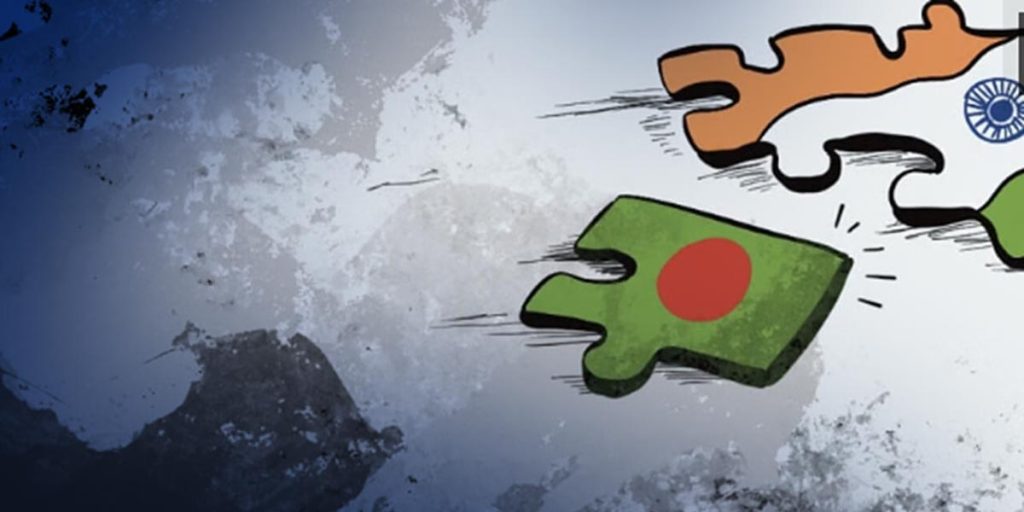Introduction
Southeast Asia, a region of strategic significance, has long been a geopolitical hotspot due to its location, economic potential, and historical rivalries. Bordered by major global players such as China and India and home to crucial maritime trade routes like the Strait of Malacca, the region is an arena for power dynamics between global superpowers and regional actors. The Association of Southeast Asian Nations (ASEAN) plays a central role in shaping the region’s geopolitical framework, yet challenges such as territorial disputes, economic dependencies, and strategic alignments continue to shape its geopolitical landscape.
The Influence of Major Powers
China’s Expanding Influence
China’s geopolitical ambitions in Southeast Asia have been increasingly assertive, primarily through economic initiatives and territorial claims. The Belt and Road Initiative (BRI) has led to significant investments in infrastructure projects, deepening economic ties between China and ASEAN member states. However, China’s assertiveness in the South China Sea, where it claims nearly 90% of the maritime territory, has sparked tensions with countries such as Vietnam, the Philippines, and Malaysia. Beijing has built artificial islands and deployed military assets, heightening concerns over security and sovereignty.
China also exercises influence through trade, as it remains ASEAN’s largest trading partner. The Regional Comprehensive Economic Partnership (RCEP), the world’s largest trade agreement signed in 2020, has further strengthened China’s economic grip in the region. Nevertheless, concerns over debt dependency, particularly among countries heavily reliant on Chinese loans, have fueled debates on the risks associated with Beijing’s economic expansion.
The United States and Its Balancing Act
The United States, traditionally a key player in Southeast Asia, has pursued policies to counterbalance China’s growing dominance. Through security alliances, military presence, and economic partnerships, Washington seeks to reassure allies and partners in the region.
The U.S. maintains a strong military presence in the Philippines, Singapore, and Thailand while conducting Freedom of Navigation Operations (FONOPs) in the South China Sea to challenge China’s territorial claims. The Philippines’ decision to restore the Visiting Forces Agreement (VFA) and expand its military cooperation with the U.S. in recent years reflects a shift toward stronger security ties with Washington.
Economically, the U.S. has promoted initiatives such as the Indo-Pacific Economic Framework (IPEF) to counter China’s economic influence. However, the lack of a comprehensive trade agreement comparable to the Trans-Pacific Partnership (TPP), which the U.S. withdrew from in 2017, has somewhat weakened its economic leverage in the region.
Japan, India, and Other Regional Players
Japan has remained a crucial economic partner for ASEAN, investing in infrastructure, technology, and energy projects. Through its “Free and Open Indo-Pacific” (FOIP) strategy, Japan has strengthened security ties with regional states, particularly through coast guard cooperation and defense partnerships.
India, another key player, has deepened its engagement through the “Act East Policy.” As a member of the Quadrilateral Security Dialogue (Quad), alongside the U.S., Japan, and Australia, India seeks to counter China’s dominance by enhancing defense ties and economic cooperation with ASEAN nations.
Australia and the European Union have also increased their engagement in Southeast Asia, focusing on trade, security, and climate initiatives, further diversifying the region’s geopolitical landscape.
The South China Sea Dispute
One of the most contentious geopolitical flashpoints in Southeast Asia is the South China Sea dispute. China’s “nine-dash line” claim conflicts with the territorial waters of Vietnam, the Philippines, Malaysia, Brunei, and Indonesia. The Permanent Court of Arbitration in The Hague ruled against China’s claims in 2016, siding with the Philippines, but Beijing has refused to recognize the ruling.
The dispute has led to increasing militarization, with China constructing artificial islands and deploying naval assets. In response, ASEAN nations have sought support from external powers, particularly the U.S., Japan, and Australia, to counter Beijing’s growing assertiveness.
While ASEAN has attempted to negotiate a Code of Conduct (CoC) with China to manage tensions, progress has been slow. The lack of a unified stance among ASEAN members, due to economic dependencies and strategic considerations, has complicated diplomatic efforts to resolve the dispute.
Economic Integration and Rivalries
Despite geopolitical challenges, economic integration in Southeast Asia continues to advance. The ASEAN Economic Community (AEC) aims to create a single market, enhancing trade and investment flows within the region. Additionally, RCEP, which includes China, Japan, South Korea, Australia, and New Zealand, has boosted economic connectivity among member states.
However, economic dependencies on China raise concerns over strategic vulnerabilities. Countries like Cambodia and Laos, heavily reliant on Chinese investments, have often aligned with Beijing on geopolitical issues, affecting ASEAN’s collective stance on regional matters.
Meanwhile, economic competition between China and the U.S. has implications for Southeast Asia. The U.S.-China trade war has disrupted supply chains, forcing regional economies to adapt and diversify their trade partnerships. Countries such as Vietnam and Indonesia have benefited from shifts in manufacturing away from China, attracting increased foreign direct investment (FDI).
Security and Military Dynamics
Southeast Asia faces multiple security challenges beyond the South China Sea dispute. Terrorism, cyber threats, and internal conflicts continue to pose risks to regional stability.
Counterterrorism efforts have been a priority for ASEAN, particularly in response to extremist activities in the southern Philippines, Indonesia, and Malaysia. The Marawi siege in 2017 underscored the threat posed by Islamist militants, prompting increased regional cooperation to combat terrorism.
Cybersecurity has also emerged as a critical issue, with concerns over cyber espionage, digital infrastructure vulnerabilities, and foreign influence campaigns. ASEAN countries have sought to enhance cybersecurity cooperation through regional frameworks and partnerships with external actors such as the U.S. and the EU.
ASEAN’s Role and Challenges
ASEAN has played a central role in fostering diplomatic engagement and economic cooperation in Southeast Asia. The bloc’s principle of non-interference has allowed it to maintain unity, but it has also been criticized for its inability to take decisive action on key geopolitical issues.
ASEAN’s consensus-based approach often leads to slow decision-making, particularly on contentious matters such as the South China Sea dispute and the Myanmar crisis. The military coup in Myanmar in 2021 has tested ASEAN’s diplomatic capacity, with divisions among member states over how to address the crisis.
Despite these challenges, ASEAN continues to engage major powers through mechanisms such as the ASEAN Regional Forum (ARF), the East Asia Summit (EAS), and the ASEAN Defense Ministers’ Meeting-Plus (ADMM-Plus). These platforms facilitate dialogue on security and strategic issues, reinforcing ASEAN’s role as a stabilizing force in regional geopolitics.
Conclusion
Southeast Asia’s geopolitical landscape remains complex, shaped by major power rivalries, economic dependencies, and regional disputes. While China’s economic and military influence continues to expand, the U.S. and other regional actors are working to balance Beijing’s dominance.
ASEAN’s ability to navigate these geopolitical challenges will depend on its cohesion, strategic partnerships, and economic resilience. As the region continues to evolve, maintaining stability and promoting regional cooperation will be crucial for ensuring long-term prosperity and security.
The future of Southeast Asia’s geopolitics will be determined by the delicate balancing act between global superpowers and the agency of regional states in shaping their own destiny.




